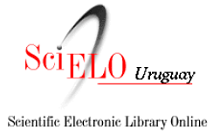Seroprevalence and factors that affect the level of seroneutralizing antibodies against EHV-1 in horses in Uruguay
Keywords:
Seroprevalence, Antibodies EHV-1, Sport equines, UruguayAbstract
Equine herpesvirus 1 (EHV-1) infection causes disease in horses and extensive economic losses associated with outbreaks of respiratory disease, abortion, neonatal foal death, and myeloencephalopathy, with worldwide distribution and probably are endemic in Uruguay. The objective of this research is to consider the seroprevalence of EHV-1 in horses in Uruguay and to determine if it is associated with factors like the age, breed, sex, and the vaccination antecedents. A total of 1517 serum samples were selected from December 2013 to March 2014. The data registered were the breed, age, sex and vaccination history. All samples were processed by the seroneutralization test and the results obtained were statistically analyzed by a logistic regression model. It is verified that the EHV-1 is widely distributed in the horse population in Uruguay, whose estimated prevalence is of 29 (IC 95= 27%-31%). The presence of positive serology for EHV-1 was associated to factors like the breed and the vaccination against EHV-1 (p<0.05).
Downloads
Metrics
Downloads
Published
How to Cite
Issue
Section
License
Copyright (c) 2016 Sociedad de Medicina Veterinaria del Uruguay

This work is licensed under a Creative Commons Attribution 4.0 International License.











